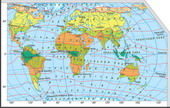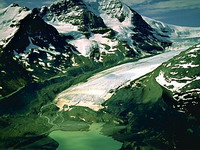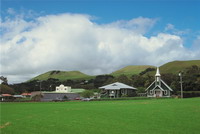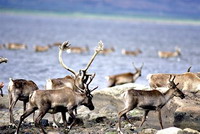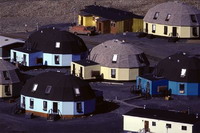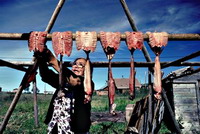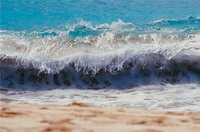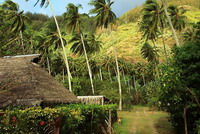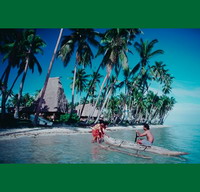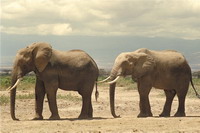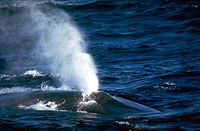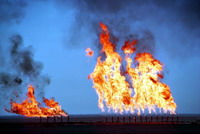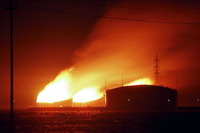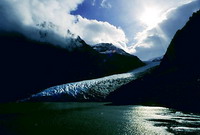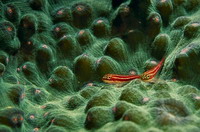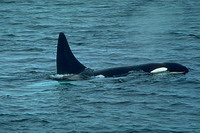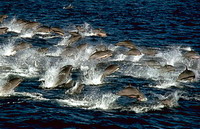According to scientists, the Earth as a planet appeared about 4.5 billion years ago. However, a long time, almost a billion years, it remained dead. Living creatures include squirrels, so life could originate only when the prevailing conditions under which the protein is not destroyed. Such conditions are formed in shallow marine due to simple physical and chemical processes about 3.5 billion years ago. The first living organisms differed simplicity and structure. They are not divided into plants and animals and zhyvylysya exclusively of organic matter. Only later, during evolution, some organisms have acquired the ability to absorb solar energy, recycle carbon dioxide to build carbohydrates and organic substances in his body, while giving off oxygen. This process is called photosynthesis, without further development of life on Earth would be impossible. Gradually, living organisms were improved and 450 million years ago some of them went dry, resulting in an integral membrane formed existence of living matter on the planet - the biosphere. Organisms that affect the environment gradually adapted to its changes. One group of plants and animals evolved in others. Biosphere, living organisms that constitute it, have made possible the emergence of man.
Biosphere - very thin and fragile shell. It gets to 11 thousand meters deep into the ocean a few hundred meters in the Earth's crust and is not beyond the ozone layer in the atmosphere. Thus, the Biosphere is located at the bottom of the atmosphere, hydrosphere and across the top of the lithosphere. In this space, live, play and develop, constantly changing, over 2 million species, which are combined into four kingdoms of nature: plants (about 500 thousand species), animals (1.5 million species), fungi (over 100 thousand species) and microorganisms.
Before the advent of life on Earth consisted of single shell lithosphere, hydrosphere and atmosphere. Since its inception, had a major impact on the biosphere change the gas balance of the atmosphere, hydrosphere and electrolyte composition of parent rock formation (upper layer of the lithosphere) soils. With living organisms became possible existence of geographic membrane that covers the space available to organisms. Geographical limits coincide with the shell outside the biosphere. Despite the geographical integrity of the shell, the natural conditions there are quite diverse. Geographic shell can be divided into fairly homogeneous in terms of natural areas - natural systems.
There azonic zonal and natural systems. The largest zonal natural complexes are geographical zones, which often extend in the latitudinal direction of the equator to the poles. Since climate is the main factor of geographical zones, the number and names correspond to the climatic zone. However, because the defining characteristics other than geographic climate zones is also a soil-vegetation, inland water, terrain, borders, geographical and climatic zones do not always coincide. At the same time each geographical area characterized by the same temperature conditions and atmospheric circulation.
Smaller-sized natural complex, characterized by similarity of temperature conditions, humidity, soil, vegetation and wildlife is a natural area. Since the main characteristics of natural conditions of natural areas is strongly dependent on receipt of solar energy and, ultimately, the climatic conditions, the natural areas change from the equator to the poles. However, as climate, natural areas are not distributed perfectly to the geographic latitude: their position significantly affect a number of other factors including the importance of playing terrain. For typical high-altitude areas explain - change in natural systems depends on the height of terrain.
Natural areas are changing in sequence. Near the poles, where year-round kept low temperature zone formed polar deserts. Development of vegetation here and eliminates pet has to be nourished by mosses, lichens and animals that live in cold waters of the polar parts of the oceans.
Desert area south of the Arctic tundra zone is.
It takes immense covered marshes on the surface permafrost. Since there are bonsai plants, but the main feature is its bezlissya tundra. Winter, tundra becomes snow desert. Gradually moving south tundra in lisotundru.

Even closer to the equator zone stretches of forest.
Significant rainfall, higher temperatures promote the development of woody vegetation. There are growing conifers (fir, larch), and south and platyphyllous (birch, aspen) tree species. Mixed forests cover the northern part of Ukraine.
Forest area south of a narrow strip stretching zone and forest-steppe. In summer the climate is dry and hot. In winter snow falls a little. Mainly herbaceous vegetation, because of the trees is not enough moisture. Today, almost entirely under cultivation steppes, as in this zone appeared among the most fertile soils - soils.
In tropical latitudes span stretched zone and semi-deserts. The climate here is most droughty and nayzharkishym. Sometimes in summer the temperature reaches 50 ° C. Vegetation, due to lack of moisture is very poor or missing. From the burning rays of the sun are small animals hiding in deep holes.
The closer to the equator, the more rain. Usually they fall out during the summer. It promotes the growth of high grass, the existence of which is specific to the area of savannas and woodlands. Trees grow solitarius, or individual small groups. In the dry season grass withers, and the trees shed leaves. The presence of grass vegetation promotes violent living in many species of large animals.
On both sides of the equator formed a zone of moist forests. The climate here is humid and hot. Flora is very diverse, forming almost impenetrable thickets. Is rich and diverse and fauna. Equator forests are often called lungs of the planet because they emit large amounts of oxygen. This raises the need to preserve equatorial forests in the original form.
 English
English


